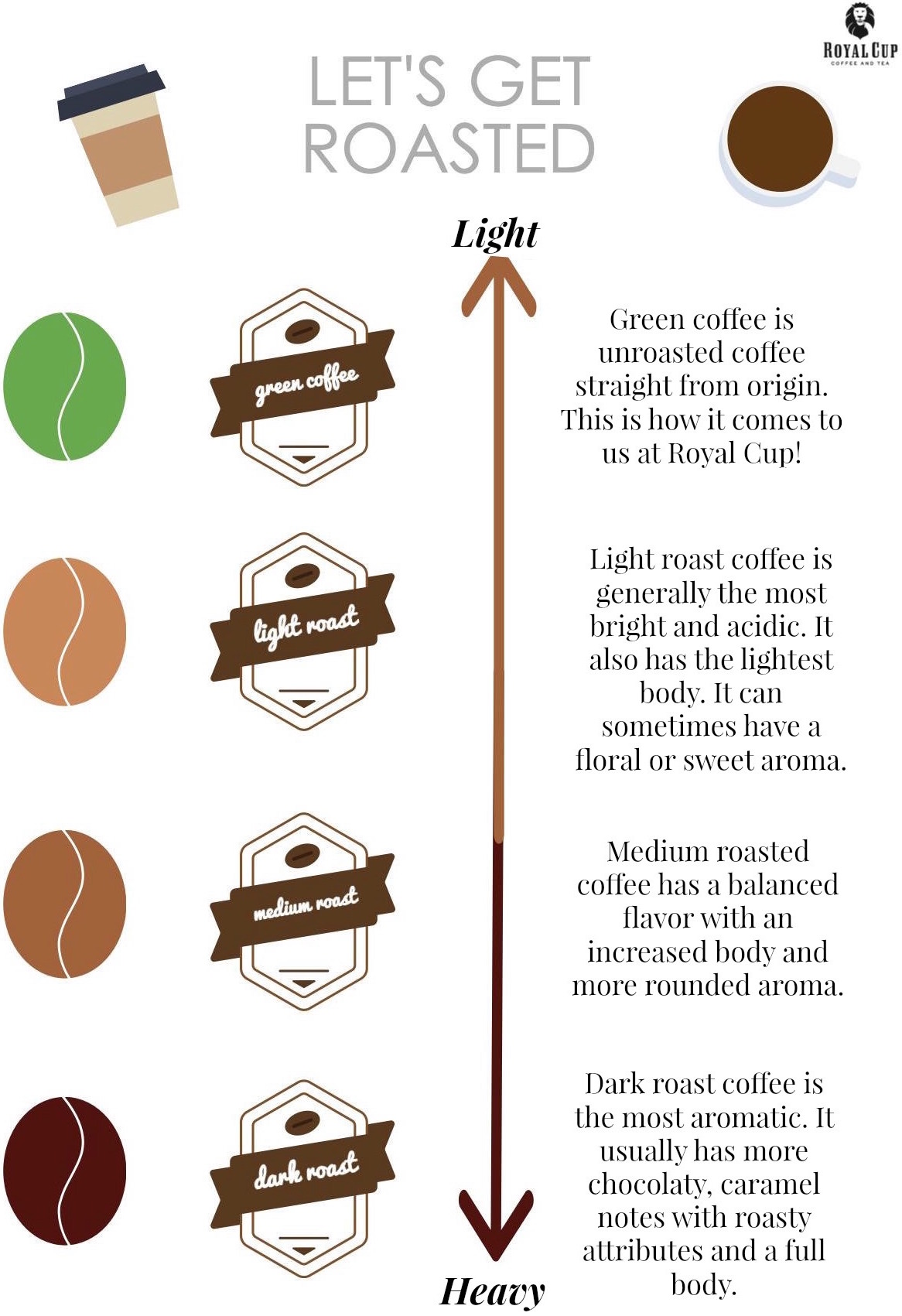What's the difference between light, medium, and dark roast coffees, anyway?
It's more than just color. The difference between light, medium, and dark roast coffees affect taste, flavor profile and more!
One thing you should know about roasting coffee is that nothing is an accident. Each coffee is roasted to a light, medium, or dark color to bring out the positive attributes and characteristics of that particular bean. For example, if a roaster wants a coffee to have brightness and acidity, he or she may roast it to a lighter color, but if they want their coffee to have a lot of body, they may roast it darker. Here’s what you should know about each roast color so you can pick out your new favorite coffee with confidence and ease.
Green Coffee:
Green coffee isn’t a roast color, but rather how the coffee comes to us from origin. Trust us when we say that you definitely wouldn’t want to grind this up, brew it, and drink it.
Bright and fruity vs. Chocolaty Caramel:
The word “fruity” can sometimes be misleading in the coffee world, but generally speaking, lighter-roasted coffees are sweeter and more acidic than dark roast coffees, which tend to be on the chocolaty, caramel, or “roasty” side. Want to strike a happy balance between the two? Try a medium roast coffee!
Light Body vs. Full Body:
Bruce Bria, our resident Q-grader here at Royal Cup describes body in the best way. He says that light body is like skim milk, and full body is like whole milk. Basically, it’s the weight of the coffee in your mouth. Light roast coffees typically have lighter body, whereas dark roast coffees have more body.
Our Recommendations:
- Light roast: Bakers Dozen Donut Blend, or Fancy Gourmet.
- Medium roast: H.C. Valentine 100% Organic Caribbean Blend, or H.C. Valentine Costa Rica Tarrazu
- Dark roast: H.C. Valentine 100% Organic Aztec Roast, or H.C. Valentine Signature Blend
Does this all sound like a lot to remember? Well, we've compiled all this information into a nifty graph below. Feel free to print, share, pin and regram!

